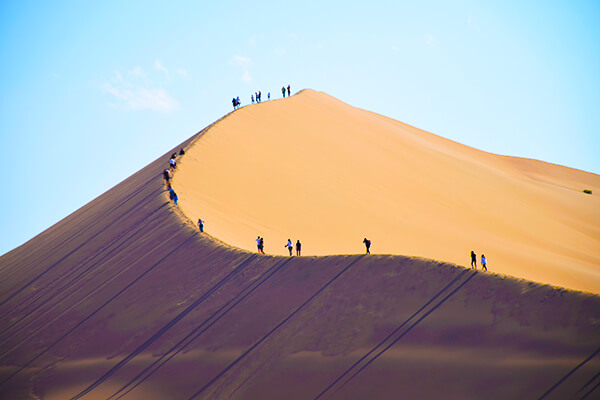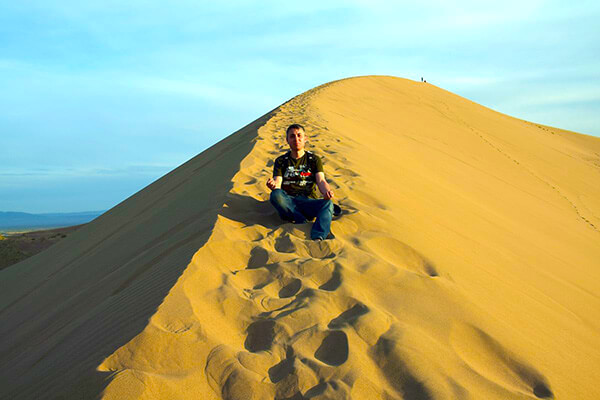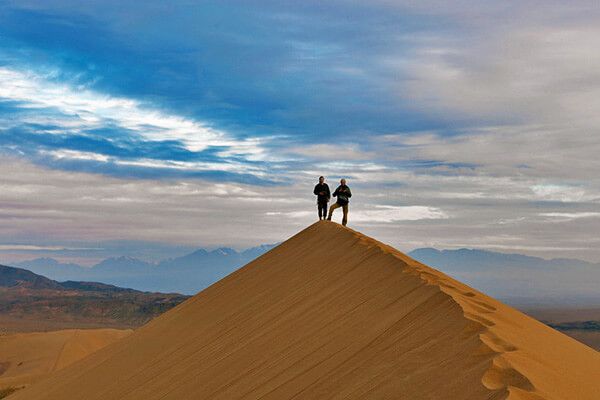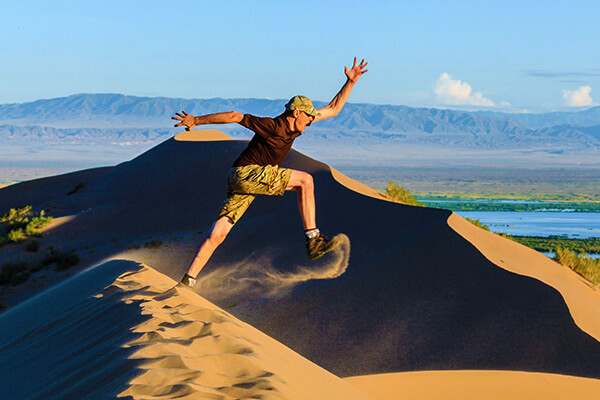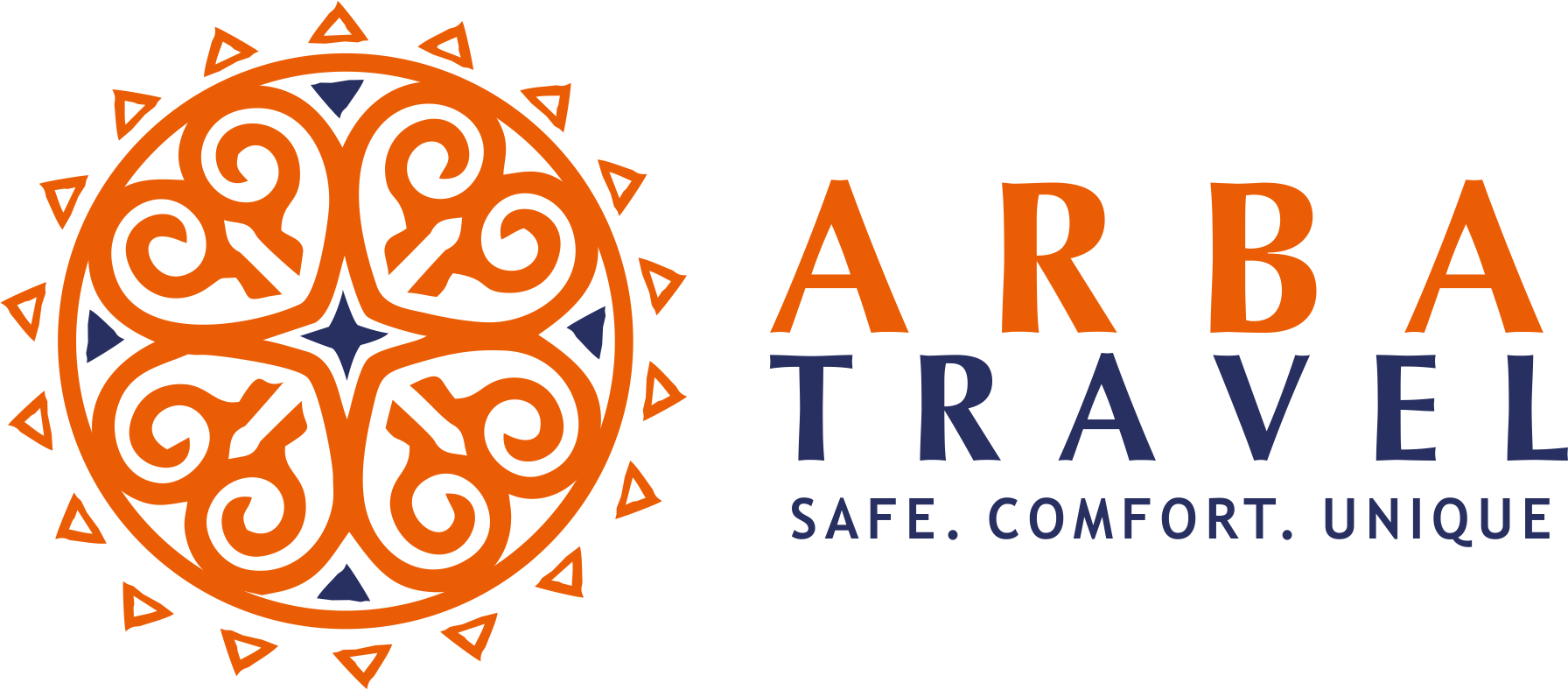Symbol of the National Park
The Singing Dune is the main attraction of the Altyn-Emel National Park, a pilgrimage site for thousands of tourists from around the world.
The Singing Dune is designated a natural monument of national significance.
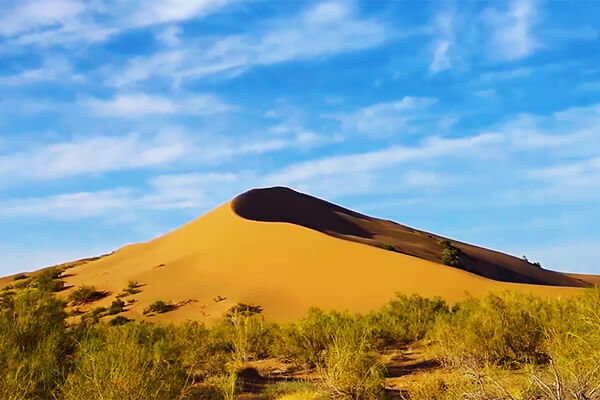
Rare Natural Phenomenon
The Singing Dune is a mountain of pure quartz sand. As the dry sand moves, the grains rub against each other, producing a long, loud sound reminiscent of low throat singing. This is why it was named the Singing Dune.
This rare natural phenomenon has been observed in only a few places in the world. The ability to produce sound depends on the size of the sand dune.

Dimensions
The dimensions of the largest Singing Dune are 3 km long and 150 m high. This is the southern dune, which is most popular with tourists. Nearby is the northern dune, about 100 m high.
The total area of the dunes is 240 hectares. The absolute heights of the ridges reach 600-650 m.
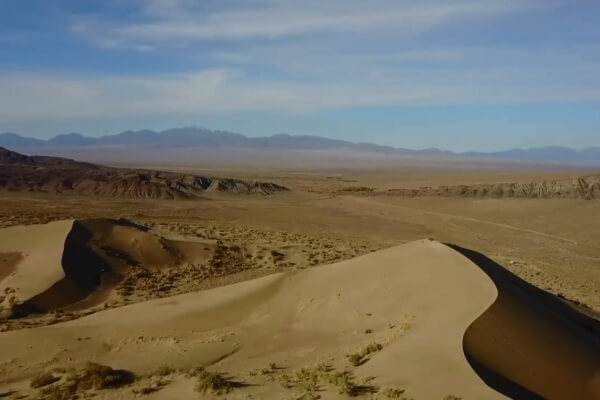
Location
The Singing Dunes are located in the southern central part of the Altyn-Emel National Park on the right bank of the Ili River, between the Big and Small Kalkan Mountains.
Distance from the village of Basshi: 46 km.
Distance from Almaty: about 300 km.

Formation
The Singing Dunes were formed as a result of geological changes. About 200 thousand years ago, a part of the Big Kalkan volcano shifted, forming the mountains known as the Small Kalkan. Between them, the wind pulled sand from the banks of the Ili River, forming huge dunes about 10-12 thousand years ago.
The mountains of the Big and Small Kalkans surround the Singing Dunes, thus preserving their unchanged shape.
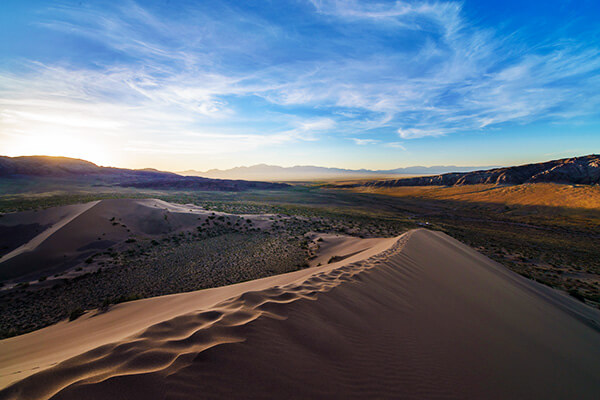
Shape
The Singing Dune doesn't wander across the desert and never loses its shape, remaining in place despite the shifting sand and strong winds.
It is the unique wind pattern in this area that determines the dune's unchanging shape and stability.

Sound
The sound of the Singing Dune resembles a low throaty chant, the low hum of an organ, or the roar of a jet plane, audible for miles around. It occurs in dry, windy weather, when sand moves, and also from mechanical impacts (for example, if you run your foot through the sand or slide down a slope).
There are various theories about the mysterious mechanism of singing sand. According to one, the frequency of the sound depends on the speed of the sand mass's movement.
Other scientists believe the vibration frequency is related to the thickness of the dry surface layer of sand. Sound waves resonate between the dune surface and the surface of the wet layer, increasing the volume of the sound.
The sound itself can be caused by friction between sand grains or the compression of air between them.
In dry and windy weather, this effect is amplified when the sand slowly flows downwards or is blown by the wind. Some scientists attribute this phenomenon to the piezoelectric properties of quartz, which the sand grains are composed of.
Certain conditions are necessary for a dune to "sing": the sand must be very dry, with the precise composition.

In Popular Culture
The Singing Dune is one of the sacred sites where the protagonist of Brazilian writer Paulo Coelho's novel "The Zahir" experiences a spiritual revelation.
"It's a pity that from the Alatau Mountains, your famous Singing Dune, which made such a strong impression on me, is neither visible nor audible," Paulo Coelho told journalist and writer Zhumagali Ismagulov, the translator of his novel into Kazakh.
In 2005, Paulo Coelho visited Kazakhstan to present his novel "The Zahir" in Almaty. One of its central characters is a sage living on the banks of the Kapchagai Lake. In his letter dated March 20, 2005, Paulo Coelho wrote to readers of the Komsomolskaya Pravda newspaper: "After my friends' enthusiastic stories about Kazakhstan, I began searching the Internet for everything I could find out about this country. And the longer I searched, the more I fell in love with the Kazakh culture. At the same time, I began writing the book 'Zaire.' And by a stroke of inspiration, one of the main characters became a Kazakh. From that moment on, the landscapes of Kazakhstan and 'Zaire' became intertwined, and the main plot line pointed toward the steppes."
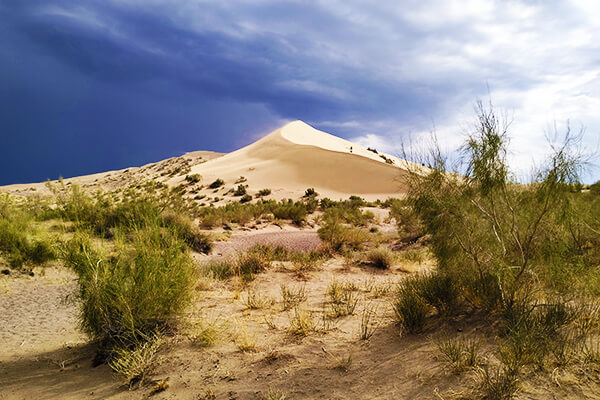
Tourist Attraction
The climb to the Singing Dune is easy, and the sand is surprisingly soft. You can hear the dune's sound beneath your feet. From the summit, a stunning panorama of the national park opens up. The large southern dune has three ridges, the last of which comes right up to the Ili River. The Singing Dune is incredibly beautiful and makes a wonderful backdrop for photo shoots.
You can only reach the Singing Dune from the village of Basshi.



